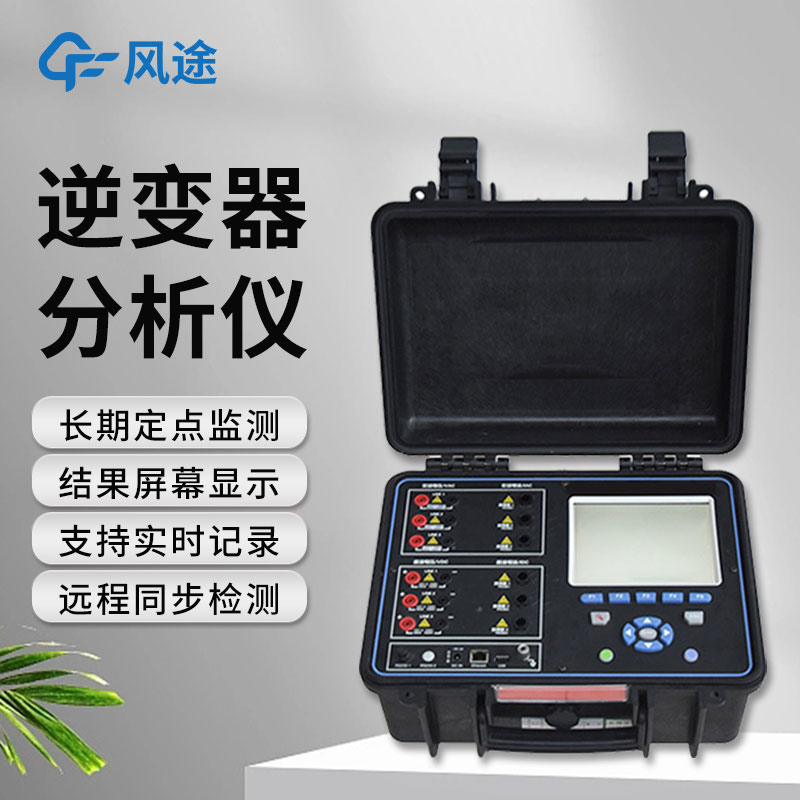In a photovoltaic power plant, the inverter is a crucial instrument.
Photovoltaic panels generate direct current (DC), while household appliances and the power grid operate on alternating current (AC). The core function of an inverter is to convert the DC output from photovoltaic panels into AC that meets the standards, ensuring the normal operation of various electrical appliances.
At the same time, the inverter can regulate the voltage, frequency, and waveform of the output AC. It ensures that the output voltage is stable within an appropriate range. For example, the effective value of the household AC voltage in China is maintained at around 220V, and the frequency is 50Hz. It also adjusts the waveform to a high - quality sine wave, reducing harmonic interference and preventing interference with other equipment.
Maximum Power Point Tracking (MPPT) is also an important function of the inverter. Since the output power of photovoltaic panels is affected by factors such as illumination and temperature, with the MPPT function, the inverter can monitor the output power in real - time, automatically adjust the circuit parameters, and keep the panels operating near the maximum power point, greatly improving the power generation efficiency.
As a connecting bridge between the photovoltaic power plant and the power grid, the inverter is responsible for grid connection. It continuously monitors the voltage, frequency, phase, and other states of the power grid and only connects the power to the grid when they meet the safety and stability requirements. Moreover, the inverter can transmit its own operating status and power generation data of the photovoltaic power plant, such as power generation, power factor, and fault alarms, to the monitoring system, facilitating remote monitoring and management by maintenance personnel.
In conclusion, the inverter plays a significant role in the efficient and stable operation of a photovoltaic power plant. Therefore, the performance of the inverter is also of great importance. So, how do we measure its performance?
PV Inverter Test Equipment is a professional instrument used to evaluate the performance of inverters and the operation of the entire photovoltaic power plant.
This analyzer can measure and record the input and output parameters of the inverter in real - time, including DC input voltage, current, and AC output voltage, current, and power. By accurately obtaining these data, the conversion efficiency of the inverter can be calculated, providing a key basis for judging the performance of the inverter.
It uses a high - speed data - acquisition chip and optimized algorithms, enabling multiple data acquisitions and analyses per second. Moreover, this instrument can quickly process a large amount of historical data. It can not only display the current performance indicators of the inverter in real - time but also analyze the performance trend of the inverter over a period of time through data analysis.
In addition to the regular measurement and calculation functions, it also has a fault - diagnosis function. When abnormal operating parameters of the inverter are detected, the instrument can quickly determine the possible causes of the faults, such as overheating and short - circuit, and give corresponding alarm prompts. At the same time, it also supports wireless data - transmission functions and can transmit the measurement data to a remote monitoring center in real - time via Wi - Fi or Bluetooth, facilitating remote management by maintenance personnel.
Considering the complex working environment of photovoltaic power plants, the body of the instrument is made of high - strength, corrosion - resistant materials, with good dust - proof and waterproof performance. The protection level reaches IP65, enabling it to adapt to various harsh weather conditions and ensuring long - term stable and reliable operation.

Article address:https://www.sqqx.net/en/news/531.html

 +86 15898932201
+86 15898932201



